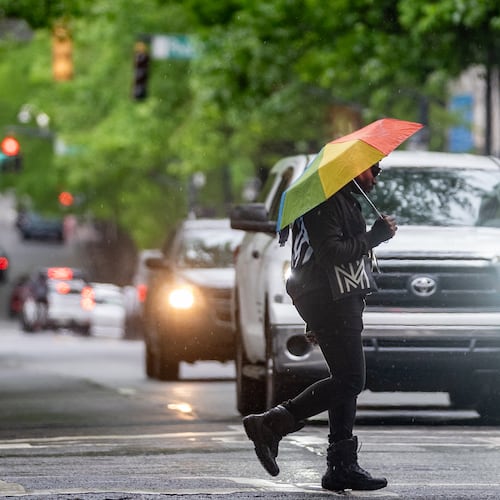The Okefenokee swamp covers more than 400,000 acres. Alligators - at least 12,000 of them - really are everywhere. They sun on the banks, slither in shallow waters, and seemingly unfazed by us in our pontoon boat, they stare at us, their eyes glowing in the bright sun.
But these vast wetlands offer so much more than alligators.
One of the Seven Natural Wonders of Georgia, the Okefenokee, near the border with Florida, is protected as a National Wildlife Refuge, which means the Stephen C. Foster State Park is very remote. In 2016, the park was officially recognized as one of the best places in the country to see the night sky.
My family and I recently vacationed at Stephen C. Foster State Park. This park is a primary entrance to the the Okefenokee Swamp. We stayed at the Suwannee River Eco-Lodge, a comfortable place with cozy cabins, located 18 miles from the state park. It is also managed by the state park. (There are on-site cottages at Stephen C. Foster but they were booked by the time we planned our trip.)
MORE: Ga. parks at night: new options include stargazing, moonlight paddles
From the moment we arrived at the swamp, my family and I were awe-struck. Spanish moss-laced trees sway in the breeze. A carpet of yellow bonnet lilies float on top on the glossy dark waters of this refuge, home not only to alligators but also turtles, black bears, herons and many other creatures. At night, we heard the barred owls hooting deep within the forest.
The one noise missing was the beep beep of mobile devices. Cellphone service was spotty at best, and honestly, I was delighted by a break from the digital world.
A fascinating place to explore, and not only during day-light hours, the swamp’s evenings dazzle with the sunsets, moon rises and a spectacular night sky full of stars.
The Native Americans aptly called the swamp the "land of trembling earth" because the unstable peat deposits covering much of the swamp floor tremble when stepped on.
"People have very negative associations when they think about a swamp. They think they are dark, dirty and maybe full of sickness," said Joshua Snead, interpretive ranger at Stephen C. Foster State Park. "It's neat to see that mentality change when people visit and see what a special place this is."
In 2016, the International Dark-Sky Association, a group that aims to protect against nighttime light pollution, designated Stephen C. Foster State Park in the Okefenokee Swamp as Georgia’s first Gold-tier International Dark Sky Park (other such places include Big Bend and Death Valley).
Park staff removed 13 streetlights and switched many bulbs to light-emitting diodes (LED). They worked with a local power company to install state-of-the-art lighting which casts downward rather than outward. Staff even retrofitted outdoor lighting on park cabins to be motion-activated.
If the sky is clear look up to see one of the darkest and most impressive displays of stars in the southeast. We were lucky during our visit: the Milky Way stretched across the horizon in a glowing arc; Venus and Mars were also bright.
Toting our flashlights, we saw orange spots glowing in the water. Those were alligator’s eyes.
Important note about alligators: Georgia State Parks said there’s been no reported attacks since the the swamp became protected as a National Wildlife Refuge in 1937. Alligators generally don’t bother humans, but it’s important people do not feed or provoke alligators. When we were boating near an alligator, they slipped away under the water whenever we got close.
Private tours by motor boat, canoe or kayak are offered for a variety of destinations and time lengths. Many are around $20 for adults; $15 per child.
Destinations include the following:
Billy’s Lake
Cruise the deepest section of the Okefenokee and the headwaters of the historic Suwannee River on Billy’s Lake.
Minnie’s Run
A trip up Minnie’s Run gets you up close and personal with the swamp. This narrow, natural waterway cuts through a dense forest of towering pine and bald cypress trees. Glide past beautiful flowers like the fragrant water lily and keep an eye out for baby alligators sunning themselves on fallen logs.
Minnie’s Lake
After a trip up Minnie’s Run, emerge onto Minnie’s Lake where cypress trees surround you, four miles into the swamp. Enjoy a picnic on a floating platform on the lake.
Billy’s Island
By the 1860s, the Lee family moved to Billy’s Island and lived off the land for decades - growing corn, wheat, beans, sugar cane and potatoes. They were fishermen, hunters, cattlemen and beekeepers.
Though fire and the Civilian Conservation Corps removed most evidence of human activity on the island, visitors can still see the Lee family cemetery, rusty remnants of the logging camp, and an Indian mound while walking a short trail through what remains of the site.
Big Water
A trip to Big Water is more than just a boat ride. This trip is a true adventure ten miles into the swamp. This tour will take you deep into the interior of the swamp. This will be a 6-plus hour trip depending on conditions.
About Stephen C. Foster State Park: located in the western entrance to one of the largest wetlands in the nation and best known for resident alligators. Because the park is 18 miles from the closest town of Fargo, Ga., most visitors stay overnight in the park's cabins or campground.
Prices vary cottages are about $150 per night.
Suwannee River Eco-Lodge, a comfortable place to stay with cabins, located 18 miles from Stephen C. Foster State Park, is another good option. The eco-lodge ranges from $85 to $125.
Cottages can fill up months in advance so try to plan your trip early.
To learn more about the park and its programs, visit www.GeorgiaStateParks.org/stephencfoster or call 912-637-5274. For overnight reservations, call 1-800-864-7275.
About the Author
Keep Reading
The Latest
Featured









